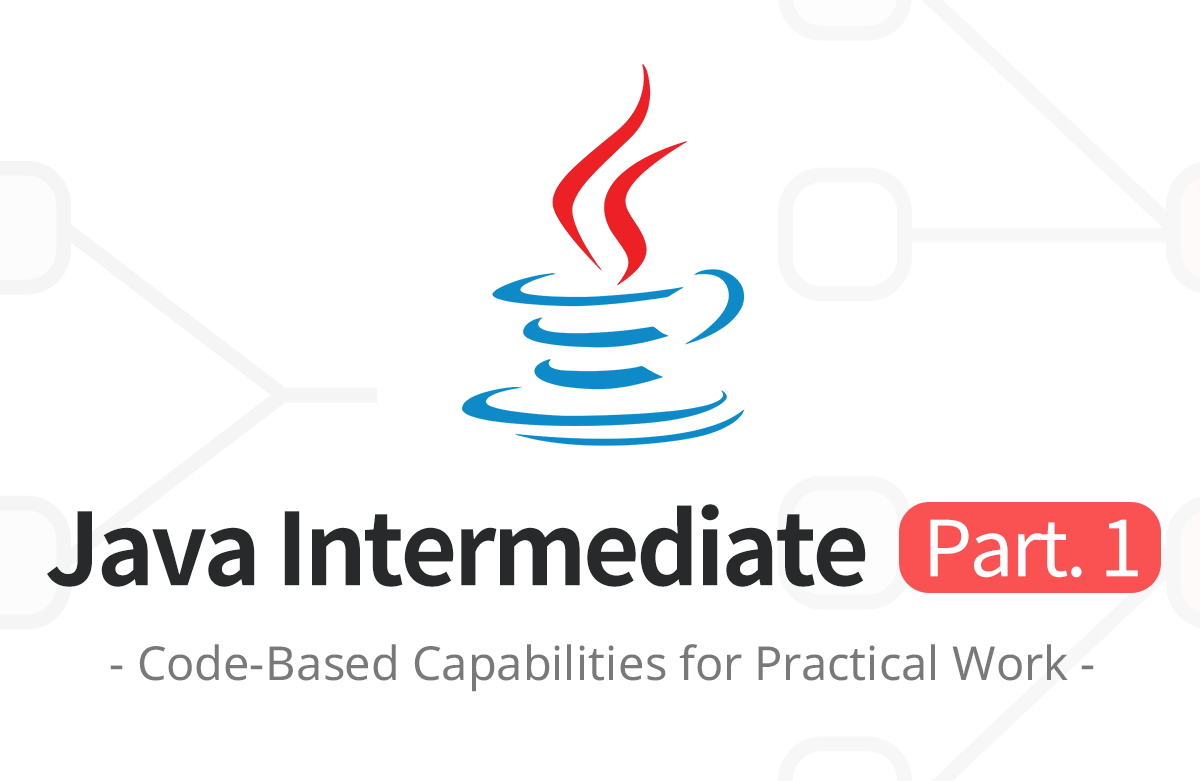Kim Young-han's Practical Java - Intermediate Level 1
This book provides an in-depth study of various intermediate-level Java features necessary for practical work, using example code.

Kim Younghan's Database Introduction, Basic Course - Opening News
Hello, everyone
The two introductory database fundamentals lectures have finally been launched: Now available.
We've decided to offer an introductory database course for free so that even beginners can learn databases without any pressure.
Kim Young-han's Practical Database Roadmap
Practical Database Introduction by Kim Young-han - Step-by-Step from SQL (Now Open)
Kim Young-han's Practical Database - Basic Course (Now Open)
Kim Young-han's Practical Database - Design Edition (Scheduled for Second Half of 2025)
Kim Young-han's Practical Database - Performance Optimization and Advanced Features (Scheduled for Second Half of 2025)
Target Audience
For your reference, this lecture has been designed to be accessible not only to developers but also to planners and data analysts.
Developer: Juniors, non-majors, and job seekers who want to build a solid foundation in database basics
Planner/Marketer: For those who need data-driven decision making
Data Analyst: Beginner who wants to build SQL skills
[Introducing the Roadmap from a Developer's Perspective]
If you're a developer, I recommend following the entire roadmap.
Many developers will relate to this: truly outstanding applications are ultimately built on well-designed databases. This is because there are problems that simply cannot be solved by application code alone—they lie within the database layer. This roadmap will fill in that other half of essential expertise, elevating you to the next level as a developer.
Beginner Course: First, build a foundation in databases and SQL basics through the 'Beginner Course'.
Basic Course: The basic course covers essential database fundamentals that every junior developer must know.
You'll gain the ability to solve any complex business requirement using SQL through joins, subqueries, unions, and case statements.
Build a solid foundation in essential SQL performance optimization for real-world applications by thoroughly understanding how indexes work.
You can develop stable applications that prevent data corruption by gaining a deep understanding of transactions and data integrity.
Design Course: The design course will elevate you to a higher level of developer. You'll learn how good database design determines an application's maintainability and scalability, and develop the ability to systematically model complex real-world requirements.
Performance Optimization and Advanced Features: Performance Optimization and Advanced Features is the final gateway to becoming a senior developer capable of handling large-scale traffic. You will master advanced techniques to identify database performance bottlenecks that no one else can solve and push your service to its limits.
By mastering this roadmap, you'll grow into a truly skilled developer who goes beyond simply implementing features—gaining deep understanding and optimization skills for both applications and databases, enabling you to find solutions to any challenging situation.
[Introduction to Roadmap from a Planning and Data Analyst Perspective]
If you're a planner or data analyst, I recommend taking the introductory course and continuing through the basic course.
Beginner Course: By learning the basics of SQL through the beginner course, you'll gain the speed and independence to instantly get the answers you need, no longer having to request data and wait.
Basic Course: In the Basic Course, we take one step further.
You'll enhance the depth of your analysis by using advanced SQL techniques like joins, subqueries, unions, and CASE statements to combine scattered data from multiple sources and reprocess it according to your own criteria.
With just these two courses, you'll become a key talent capable of improving services based on data, persuading organizations, and communicating effectively with development teams.
If you want to directly lead data-driven products, taking the advanced 'Design' course to deepen your understanding of data structures could be a great choice.
This roadmap's introductory and foundational sections will completely transform the way planners and analysts work with data.
Beginner Course - Section Contents
1. Course Introduction and Study Materials
2. Introduction to Databases
3. Starting the Database
4. SQL - Data Management
5. SQL - Retrieval and Sorting
6. SQL - Data Processing
7. SQL - Aggregation and Grouping
Beginner Course - Section Contents
1. Course Introduction and Study Materials
2. Join 1 - Inner Join
3. Join 2 - Outer Joins and Other Joins
4. Subquery
5. UNION
6. CASE Statement
7. 뷰(View)
8. Index1
9. Index 2
10. Data Integrity
11. Transaction
12. Stored Procedures, Functions, and Triggers
I've gathered your questions about roadmap progress and will answer them.
1. Basic Order of Progressing Through the Database Roadmap
- The basic order is Java -> Database -> Spring -> Spring Boot and JPA application.
2. Recommended Order for Progressing Through the Database Roadmap
The most effective learning sequence is to study the introductory and basic database courses right before Spring DB1 in the Spring roadmap.
Therefore, you will learn in the following order.
- ...
- Spring MVC2
- Database Fundamentals
- Database Fundamentals
- Spring DB Part 1
- Spring DB Part 2
- ...
We recommend completing at least the Database Fundamentals course before proceeding with the Spring Boot and JPA application roadmap.
I'll reorganize and let you know again about the database design section, performance optimization, and advanced features once they're released.
3. Will the course be based on MySQL or Oracle?
The hands-on exercises focus on MySQL, but the lecture content emphasizes universal knowledge that covers not only MySQL but relational database management systems (RDBMS) in general. Therefore, the goal is to achieve a broad understanding that isn't limited to any specific database.
To use an analogy, in this course we'll learn how to drive a car called MySQL. But rather than simply learning how to operate one specific car model, we'll focus on mastering the fundamental driving principles—like accelerators, brakes, and steering wheels—that apply to any car (RDBMS). These core concepts of RDBMS will be beneficial when working with other RDBMS systems as well.
Thank you.



